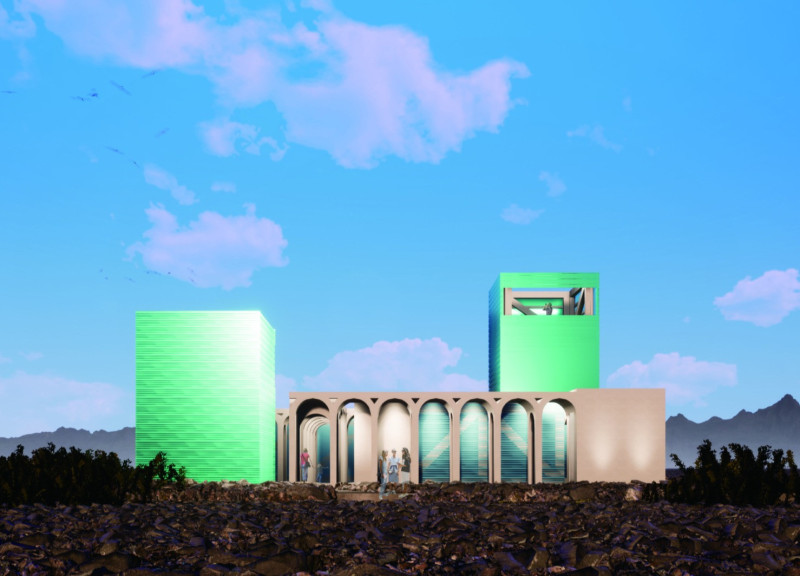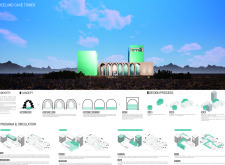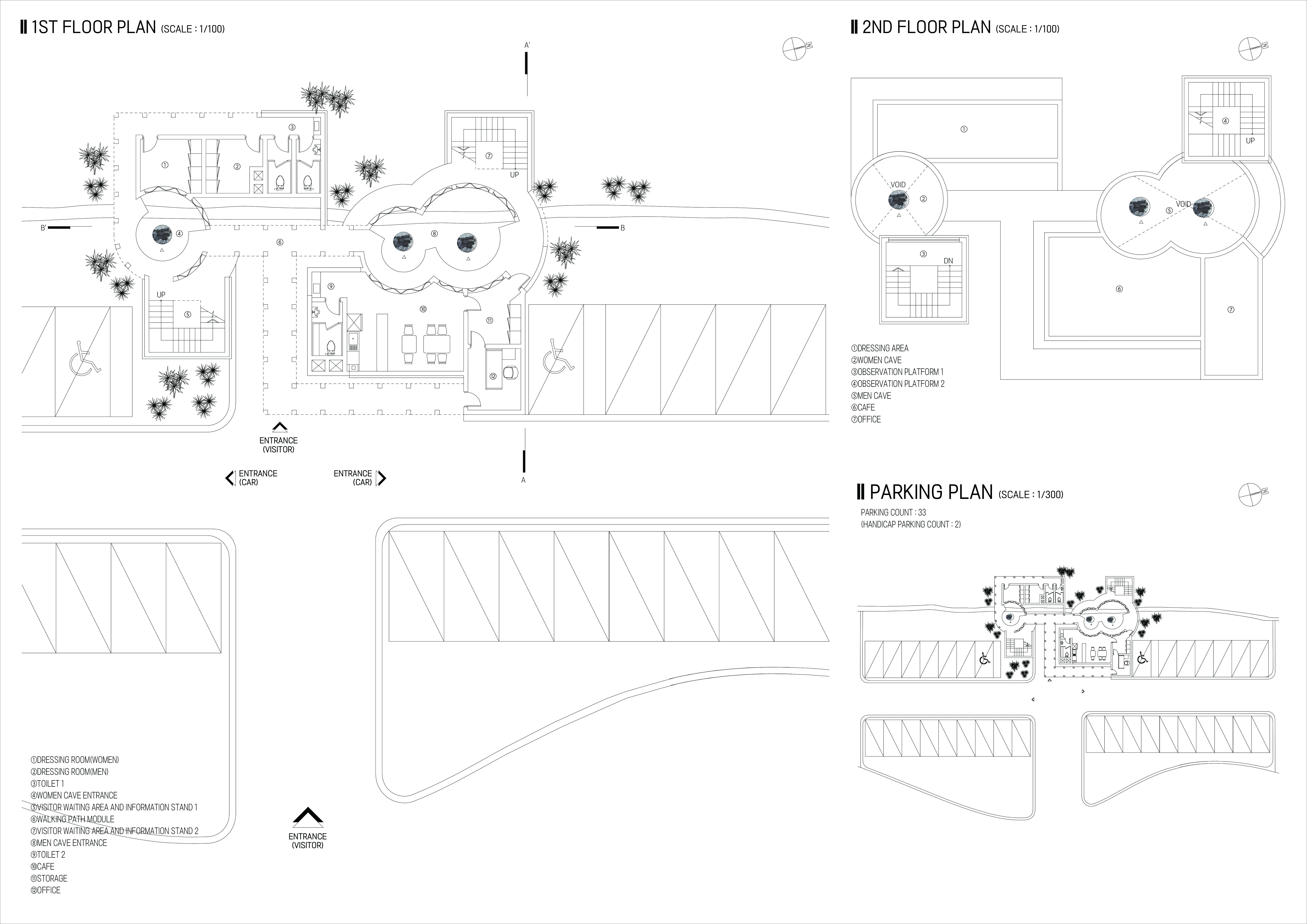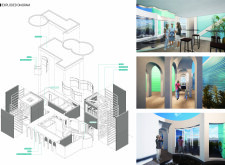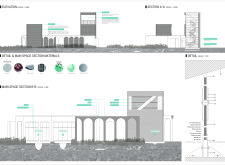5 key facts about this project
The Iceland Cave Tower serves as a visitor center located within a thermal spring cave in Iceland. Its main function is to enhance the experience of visitors while they explore the geothermal features of the area. The design connects with the natural landscape, promoting harmony between built spaces and the surrounding environment.
Architectural Form and Function
The design establishes a clear connection between the visitor center and the thermal spring caves, featuring the "WALKING PATH MODULE." This module acts both as a pathway and guide, encouraging visitors to explore different areas. Key spaces, such as the Women Cave, Men Cave, and Pinnacle Observation Platform, are arranged to provide easy access and foster engagement with the natural landscape.
Site Integration and Spatial Organization
The project respects the natural topography and geology of the location, emphasizing the concept of site integration. Each space, including the Bath Cave and Dressing Area, is carefully positioned to ensure user comfort and privacy. This layout supports effortless navigation through the caves, allowing visitors to appreciate the remarkable geological context of Iceland.
Transparency and Immersive Experience
Large glass panels are used throughout the design, ensuring views that link the interior with the stunning exterior surroundings. This use of glass creates an immersive atmosphere for visitors, helping them feel connected to nature. The Glass Cafe, located strategically within the center, enhances this relationship by providing visual access to the landscape outside.
Landmark Design Element
A distinctive feature of the design is the spire, which serves as a visible marker for the visitor center. This element is not merely for decoration; it represents the unique geological features of the region. The relationship between the spire and the natural setting gives visitors a continual reminder of the beauty they are experiencing.


